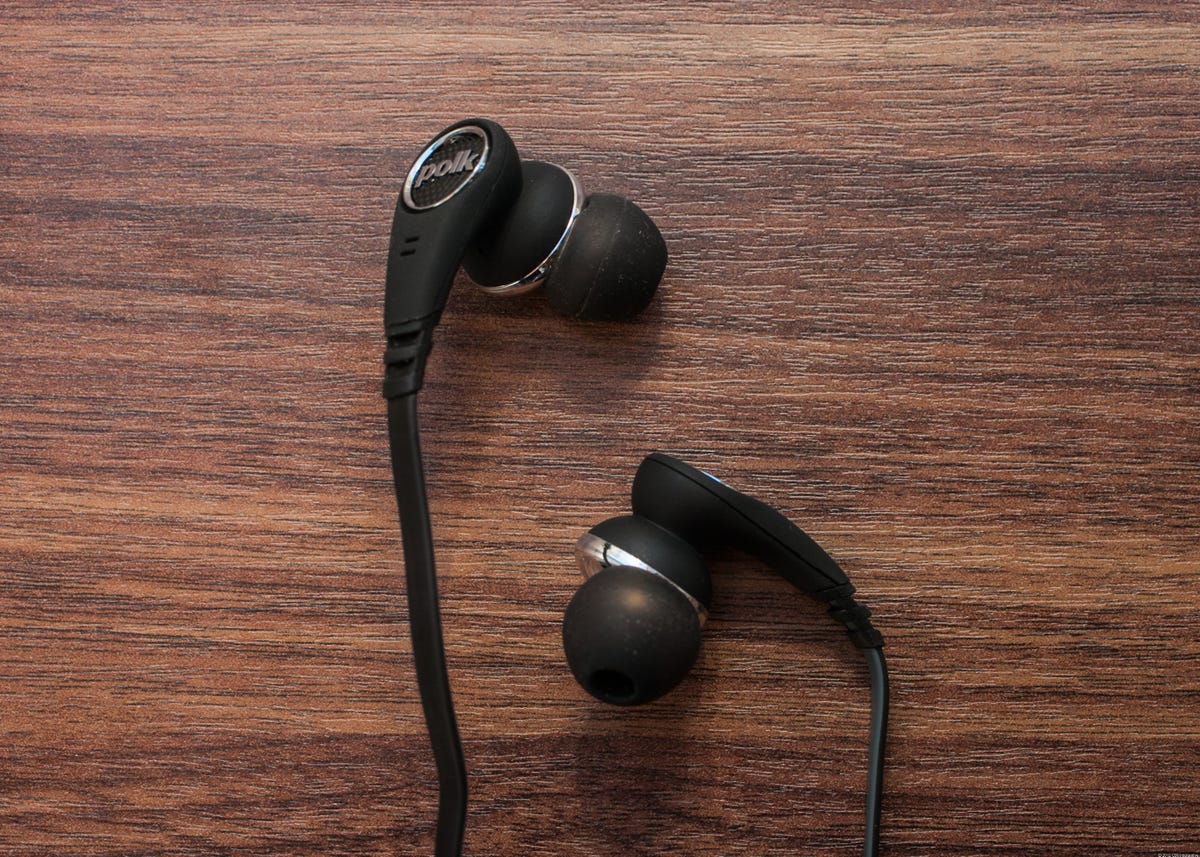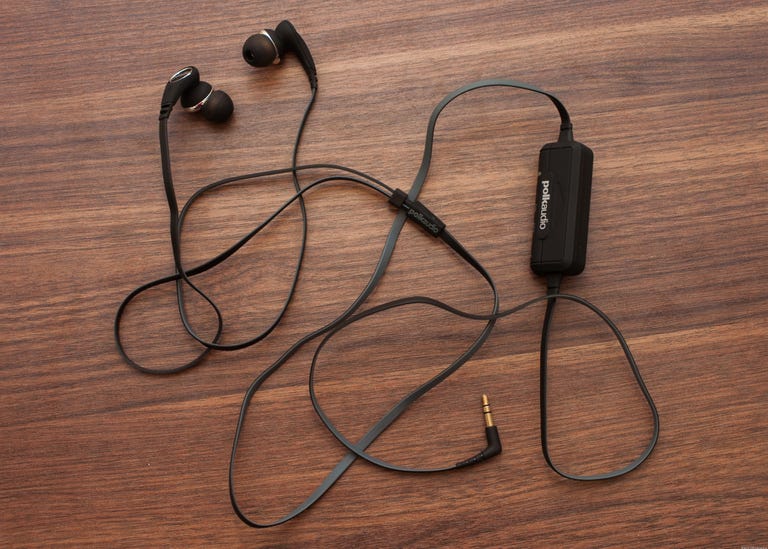 Why You Can Trust CNET
Why You Can Trust CNET Polk Audio UltraFocus 6000 review: Polk Audio UltraFocus 6000
Its noise-canceling function is just average for its design class, but those looking for a midprice model will dig the Polk Audio UltraFocus 6000 in-ear headphones.
Polk Audio may be best known for its speakers, but its new UltraFocus Series of headphones include active (battery-powered) and passive noise-canceling features.
The Good
The Bad
The Bottom Line
The UltraFocus 6000 ($149.95) in-ear headphones monitor external noise levels and tailors the frequency response to enhance the sound, and the headphones' physical construction feels robust with a thicker-than-average cable and Kevlar-reinforced connectors that should provide a long service life.
The UltraFocus 6000's noise-canceling prowess on the NYC subway and buses is average for an in-ear noise-canceling design, which is to say they're just slightly better than non-battery-powered, passive-noise-isolating in-ear headphones.
On the other hand, the UltraFocus 6000's fat bass should register with buyers listening to rock, electronic, hip-hop and dance music, which is another way of saying the bass-heavy UltraFocus 6000 isn't the most accurate set of headphones you can buy in its price class. Classical music and acoustic jazz lovers may not be happy with the UltraFocus 6000's overly ample bass boost.
Design and features
The UltraFocus 6000's polished-metal-and-matte-black earpieces are distinctive and suitably stylish. I also like that the earpieces are clearly marked "L" and "R" so they're easy to identify in low-light conditions -- a rare quality for earbuds.
Comfort levels are good, and the selection of three pairs of Stayfit silicone tips, two pairs of Stayfit three-flange silicone tips, and two pairs of memory foam tips should make it easy to find just the right tip for your ears.

I'm not supertall, but the headphones' 56-inch-long black-and-gray cable felt short, and I found myself wishing it was 6 inches longer. Still, it's preferable to cables that are too long. The wire has an inline controller with a Push-To-Hear Ambient Control button that simultaneously mutes your tunes and amplifies outside sounds so you can hear the world around you without removing the headphones.
The controller also has a "0/-10" slide switch that boosts or cuts the headphones' peak volume level. I used the "0" setting because the UltraFocus 6000 wouldn't play loud enough when the switch was in the "-10" position. I was less happy with the inline controller's plastic shirt clip that felt too small to clip onto my jeans.
Additionally, its cheap plastic construction doesn't inspire confidence in its long-term durability. The biggest misstep, however, is that the UltraFocus 6000 lacks an integrated microphone and phone controls, which may be a deal breaker for smartphone users who prefer to store their devices in a backpack or otherwise inaccessible carrying case like a pocket or briefcase.
The inline controller box houses one AAA battery, and there's a small blue LED that lights to confirm that the power is turned on. Battery life expectancy isn't specified by the manufacturer, but it's worth noting that I never changed the battery, even after accidentally leaving it on for a full day.
Still, UltraFocus 6000 owners would be wise to always keep a spare AAA battery on hand, because once the battery is drained, you'll lose the noise-canceling feature and worse, the headphones won't play music. I can't judge the UltraFocus 6000 too harshly for that misstep, as Bose's most expensive noise-canceling models also share the same design failure.
Accessories include a semihard, zippered travel case, airline adapter, cable shirt clip, and a short female-to-male 3.5mm cable.
The UltraFocus 6000 comes with a one-year parts-and-labor warranty, and you'll an invoice or proof of purchase to initiate a warranty claim.
Performance
The UltraFocus 6000 is a big-sounding in-ear set of headphones. The rich tonal balance is the prime reason for that, and it sounds best when played fairly loud. It's also comfortable to wear for hours at a time, and I used an iPod Classic for all of my listening tests.
The SE315 is a more accurate-sounding headphone set, but it has less bass, and a clearer, more transparent sound balance with a noticeably present treble "sparkle." The UltraFocus 6000 sounds "heavier" because the deep bass frequencies are boosted higher than they are on most in-ear headphones. Most people enjoy a rich sound balance, and the UltraFocus 6000's bass pitch definition is good, but not great.
The warm balance extends up to midrange frequencies, so vocals like Thom Yorke's on his album "The Eraser" tend to exhibit more body than they do on most in-ear headphones. Stereo imaging also has a pleasant, wide-open quality, but treble detail is subdued.
The overly full bass balance seems a little out of place for classical and jazz, so I wouldn't recommend the UltraFocus 6000 to folks who listen to a lot of acoustic music.
Conclusion
While the Polk UltraFocus 6000's noise-canceling abilities aren't great, they do exceed noise-isolating (battery-free) in-ear headphones. Buyers seeking the best possible noise-canceling should seriously consider purchasing full-size, over-the-ear noise-canceling headphones; the UltraFocus 6000 will appeal more to buyers craving lots of bass in a smaller, more travel-friendly design.


